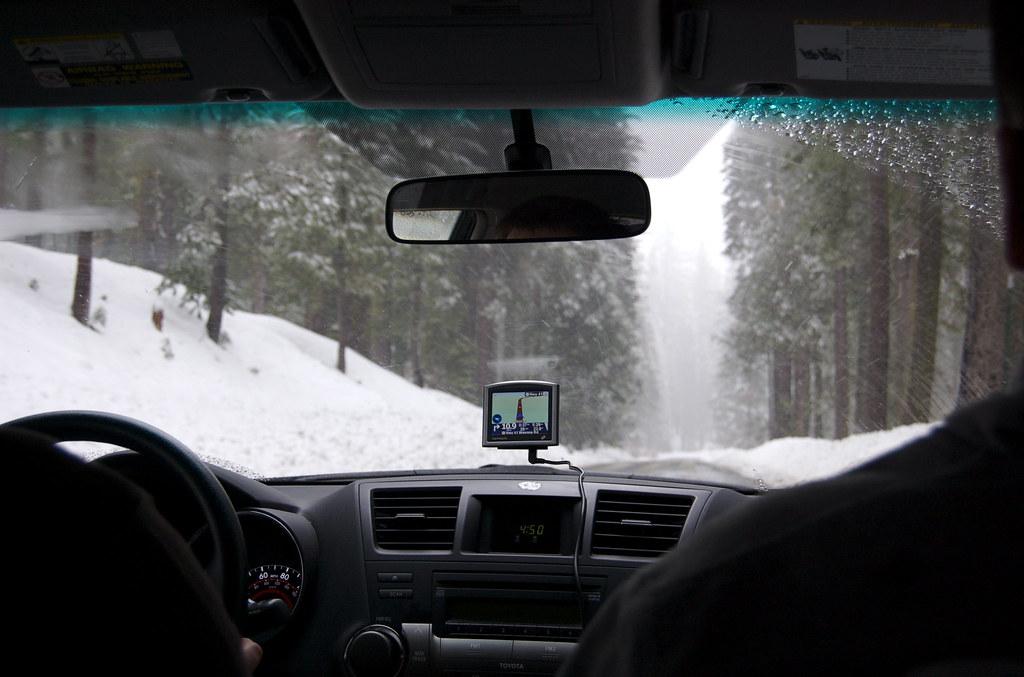Miina McCown/The Broadside
While Central Oregon didn’t get much snow during the November and December months, we’ve recently seen the first snowfall of 2021. As the winter term continues, it is likely that there will be more snow headed our way. And more snow most likely means icy and slushy roads.
A recent poll featured in the New York Post reveals that nine out of ten American drivers believe that others don’t know how to drive safely in winter conditions. With more and more out of state drivers making their way into Oregon, it is important for those with little to no experience driving in winter conditions to learn some tips about driving in the winter and avoiding roadway accidents. Even for people who do have the experience, it is nice to have a refresher every once in a while on some tips and tricks for avoiding in winter.
1. Keep your distance
Although it’s a good idea to keep a distance from vehicles in front all year round, remembering to do this is especially important in the winter. If a driver in front were to suddenly stop and the driver behind them was following too closely they would most likely experience a rear-end crash.
The standard advised following distance from the vehicle in front is three to four seconds, and in snowy or icy roads, this should be elongated to eight to ten seconds for optimal safety.
2. Drive slowly and be cautious of traction
While it may be tempting to drive at a regular speed, especially if one is in a hurry or has a tight schedule; when driving in snow, ice or slush or even rain, it is recommended that drivers slow their speed to a third or half of how fast they normally travel. Additionally, being vigilant of traction issues and skidding, as well as refraining from slamming on the breaks as soon as the driver begins to feel the vehicle veering off the path, helps maintain safety.
Unfortunately, as a result of the pandemic, while SkidCar training in Deschutes County is currently unavailable, it is a course that helps drivers experience the feeling of driving on an icy road and to practice and learn how to take control of the vehicle, especially when making turns or stopping. For more information on SkidCar training, click here.
3. Prepare in advance
Checking the weather a couple of days in advance and knowing when the roads will be snowy, rainy or icy will help drivers take precautions such as cleaning lights and windows, checking the windshield wipers, checking the pressure and tread of their tires. Not only will doing so help maintain driving safety in the moment of need, but it will also help drivers know of changes in the weather in advance to prevent any surprising adjustments in plans!
4. Look far ahead
In order to stay safe and aware of hazardous or slippery roads, looking far ahead is something drivers should often remember to do. And not only literally looking far down the road, but it is also advised to look ahead into the future and anticipate turns, slopes and routes that may be hazardous and reminding oneself to slow down and allow greater stopping distance. A simple way to remember how to follow this step is just by knowing that the slipperier the surface is, the farther one should gaze down the road ahead.
5. Get winter tires
While this may seem like an obvious tip, it’s something that is essential for maintaining safety, especially in Oregon winter conditions. The article from the New York Post states that winter tires increase traction by around 25-50 percent. And while it may be a common misconception that year-round tires will do the job just fine, winter tires are the safer way to go since they are designed specifically for prolonged winter roads with ice, snow and slush, staying more flexible for the long winter conditions.









